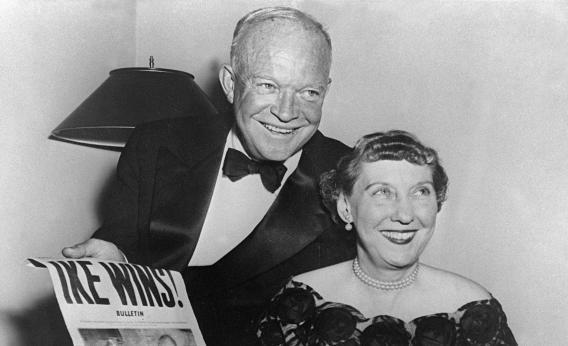Yesterday someone posted this “e-card”—we still use that word—which reads “Vote like your lady parts depended on it” on Barack Obama’s official campaign Tumblr. It was then taken down, though too late to escape widespread derision among those given to be offended by official campaign Tumblrs. Whether you think this card sexist, dumb, trenchant, or an intolerable intrusion of stupid campaign gaffes into your otherwise dignified existence, the talk of lady-part-driven voting comes at a time when women are supporting the Democratic candidate by a wide margin.
If you read about this kind of thing you’re going to encounter the assumption that the gender gap is due to the Republican Party’s record on abortion and contraception, but the issues on which men and women are most likely to disagree tend to be more abstract. The Economist rightly attributes much of the difference to social welfare spending:
It is tempting to blame the re-emergence and persistence of the gender gap, particularly since 1996, on the parties’ differences on women’s issues, dating back to 1980 and Reagan’s opposition to abortion and the Equal Rights Amendment. In this view, women have abandoned a party that has turned rightward on issues important to them. However, a look at the trend in party identification among women and men indicates that the source of the gender gap is more likely the movement, beginning as early as 1964, of men toward the Republican Party. During this same period, women generally stuck with the Dems.
So why did men leave the Democratic Party, while women did not? According to political scientists, the primary influence seems to be their different attitudes toward social-welfare spending. (See pages 95-105 of Morris Fiorina’s book for a short summary of the evidence.) Since at least 1948 men have tended to be more conservative than women on social-welfare issues, but the difference grew more noticeable when the role of “big government” and rising budget deficits became an increasingly important wedge issue. Reining in government growth was central to Reagan’s 1980 campaign, and the desire to limit taxes and spending has continued to be a salient theme among Republican candidates. Democrats, meanwhile, have consistently sought to portray themselves as protectors of the social safety net.
It’s easy to overstate the extent to which American women are defined by an affinity for, say, entitlement spending. That women who live in the jurisdiction known at the United States are in the present historical moment somewhat more likely than men to tell a pollster they prefer an expansive social safety net is not even to say that this is the single defining issue for very many people. It’s merely to say that when you divide up American voters by gender, this shakes out as a difference. But because this is the Internet, right now a very excitable group of amateur evolutionary psychologists is likely generating hypotheses about go-it-alone men leaving the nest to kill something while women stay at home gathering the primitive equivalent of welfare checks—a situation that sounds good and I propose we reinstate, but fails to explain why women were so taken with Dwight Eisenhower.
In any case, I imagine that Republican strategists looking toward 2016 would prefer a world in which women vote exclusively on abortion rights rather than one in which significant numbers of women stand opposed to the party’s key rhetorical and philosophical commitment. (Not that such a commitment often translates into action.) It would seem that what is left for the Republicans to do is to argue that maintaining a certain level of social services requires a responsible husbanding of resources rather than infinite increases in spending. Which the Republicans have, at times, attempted to argue. But the message is rather undercut when Mitt Romney writes off 47 percent of the electorate and 67 percent of the electorate hears about it.
